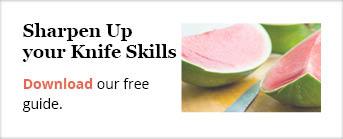
I've got knives on the brain again. If you read my previous post, you know that I made the argument for having only four knives in your kitchen. And while I still believe that to be true – if you can only EVER have four knives – those are the ones to have in your kitchen. However, the more I thought about it, the more I realized I would like to add another set of cutting utensils to your repertoire. While these knives serve in a more specialized capacity, as you advance in your cooking skills, they will become essential in their own right.
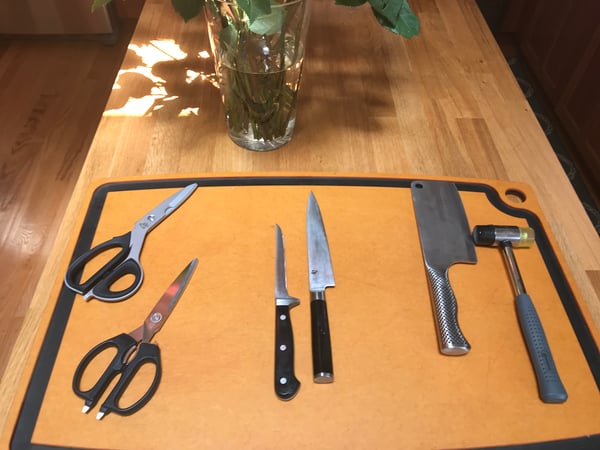
Remember how I wrote about knives being the cool kids in the room? Well, the knives I will explain today are like your favorite cousins, the ones you don’t see very often, but when you do, you can’t imagine why you don’t spend more time together!
Cleaver and Rubber Mallet
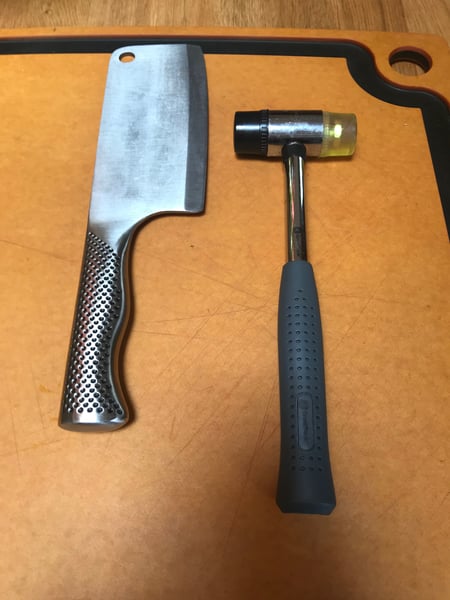
I have to confess, even after culinary school, I did not understand how to use a cleaver properly. Perhaps it’s all of the horror movies I have watched over the years where you see the villain hacking into his victim! The truth is that you must use a mallet in conjunction with the cleaver in order to achieve optimal results. The reason why cleavers have fallen out of fashion is because traditionally they are used to help butcher animals. They are often the only tool that can break through larger bones and joints. And since most of us, (myself included) wouldn’t even know where to begin breaking down a large farm animal, many think this tool is unnecessary. Ah, this is where I was mistaken.
So often we choose to buy the pre-cut versions of these foods because it’s just too difficult to try to cut into them with a Chef’s knife. I know that time and convenience also play a role, but if you invest in a cleaver, cutting into these foods is a breeze. There are other reasons you may want to cut these items yourselves. The most important being you will control the sanitation in your own kitchen better than any facility would, and second, your food will be so much fresher and have far superior flavor and texture. A cleaver is an investment for sure, and most mallets can be purchased inexpensively from a local hardware store for about $10, but it truly is one of those tools that once you feel confident in using it, it will become a go-to utensil.
Think of acorn and butternut squash or even the Thanksgiving turkey carcass (which is so delicious as stock for soup), but probably the most ingenious way to use a cleaver is to cut nature’s summer candy. What is better on a hot summer day than a refreshing slice of cold watermelon? It's sweet, and juicy, and oh so satisfying. But, it is also very intimidating to cut. Below are a series of pictures to show you how to use a cleaver to cut one.
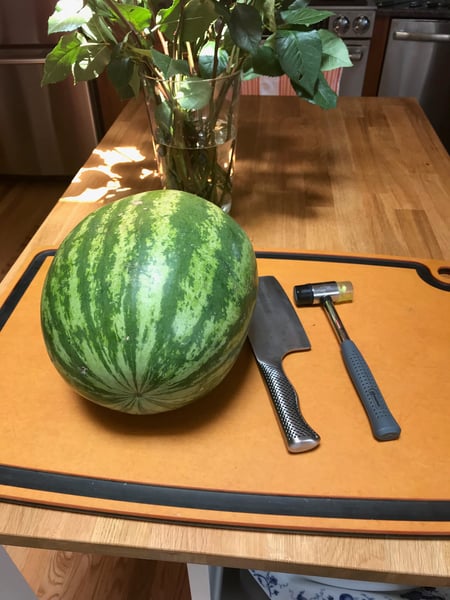
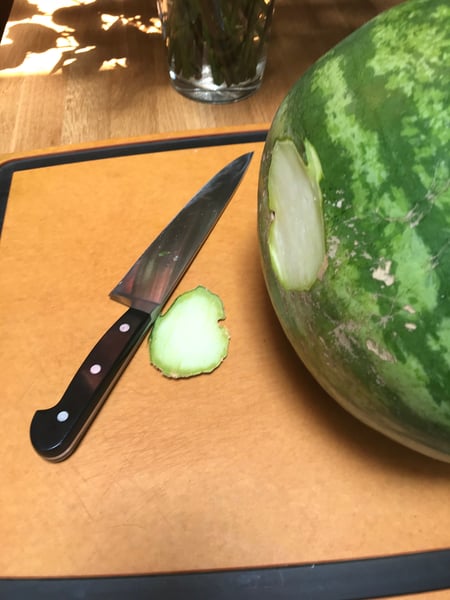
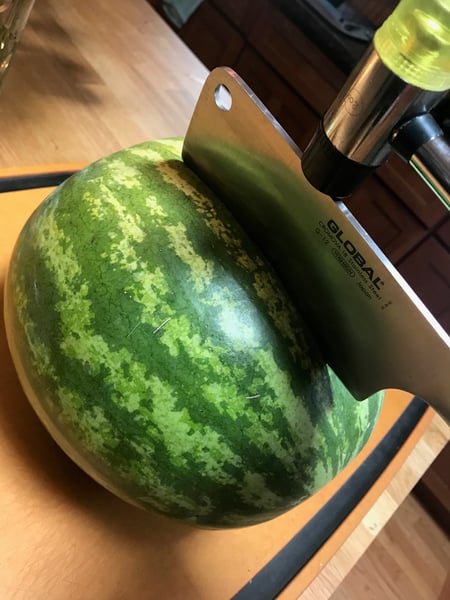
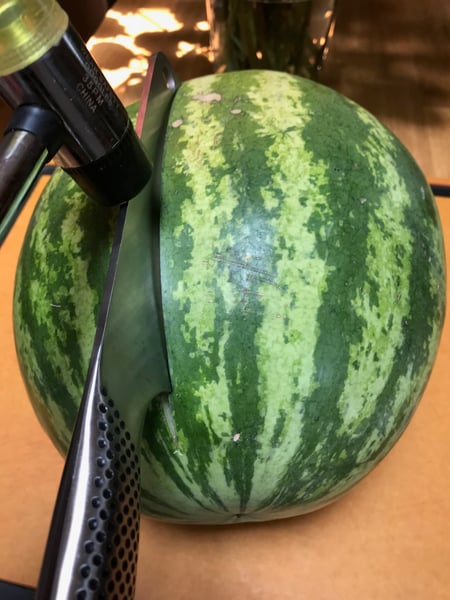
What’s most important to remember when using a cleaver is that the cleaver stays stationary – it’s the mallet that drives the cleaver through the item you are splitting.
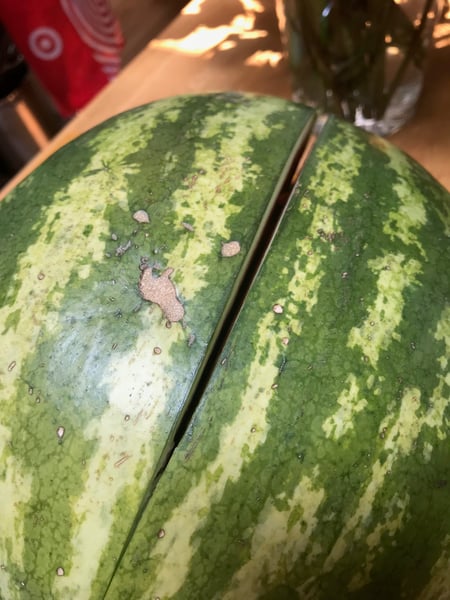
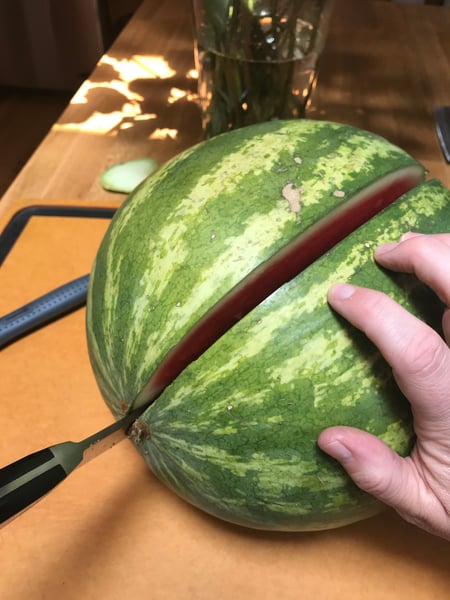
Once you create a split with the cleaver, you can then use a chef’s knife to finish the process if necessary – remember to keep the watermelon on the flat edge you created for stability and take your time!
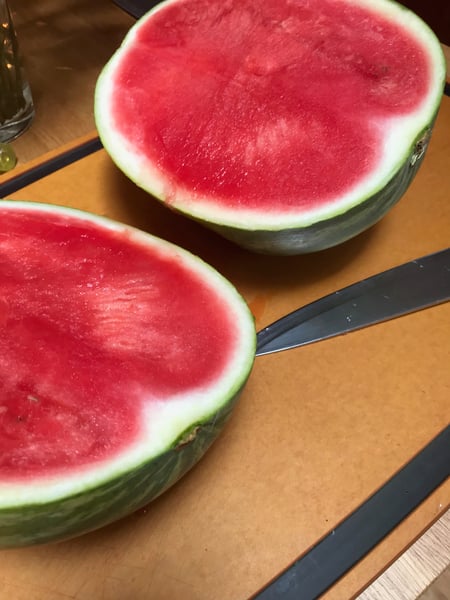
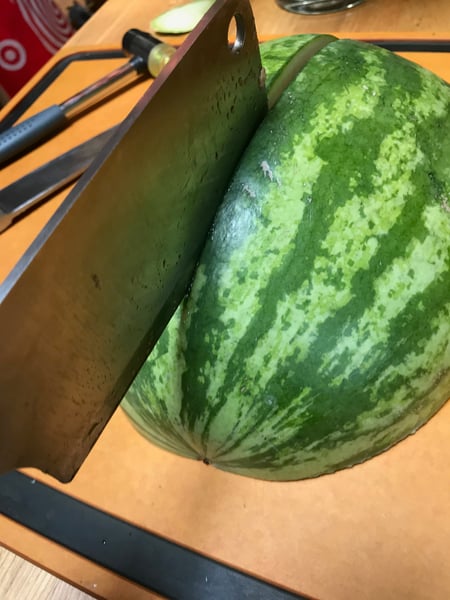
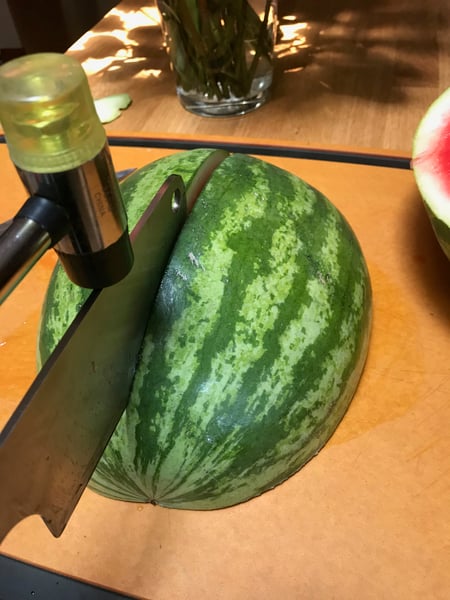
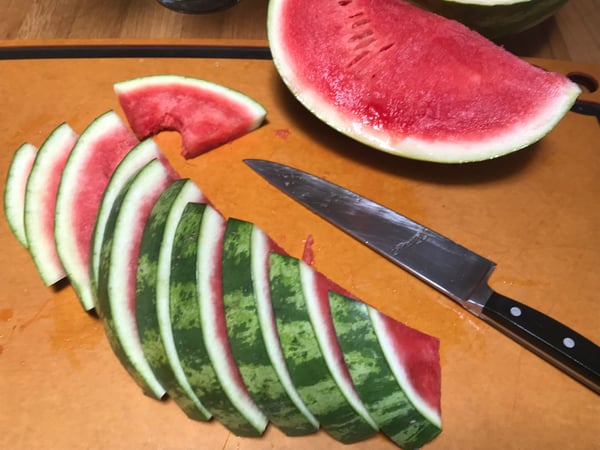
Once the watermelon is in two halves – use the cleaver and mallet again to break into into quarters – and then finish with your Chef’s knife.
Fillet Knife
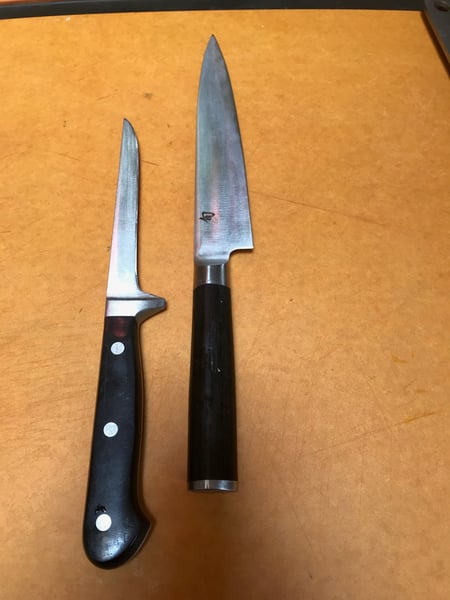
This knife is the beauty queen of your collection. She is fine, sleek, and designed to add a level of finesse to your cooking and presentation that no other knife can. The essential characteristics of a fillet knife are that the blade is flexible and thinner than many other knives. The thinness of the blade it what allows for it to be flexible which is essential to its purpose. This is the knife you use if you want to de-bone a chicken, or fillet a fish because it allows you to maneuver the blade around the bones. But it is also a fantastic knife for making very thin slices of fruit or vegetables for a tart.
The pictures display 2 different styles of fillet knives, and I do use them both. The narrower blade Wustof version is the one I reach for the most because the blade is slightly firmer than the Shun version, and so if I am using it for a non-specific purpose I want the extra strength it provides. The Shun is my go to for any and all pretty slices I want to make of fruit or vegetables. The length and width of the blade, its sharp point, and its flexibility, make it the perfect choice for that kind of work.
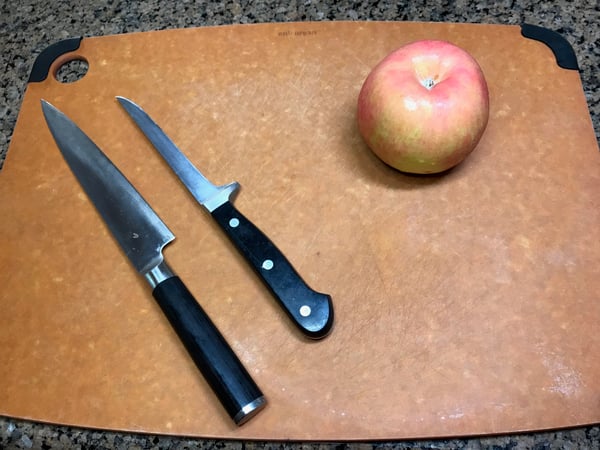
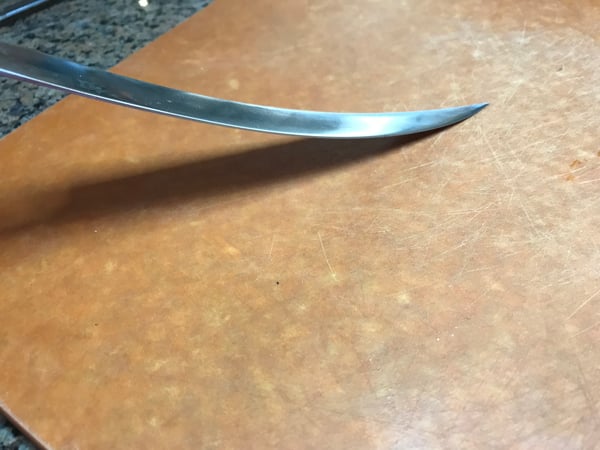
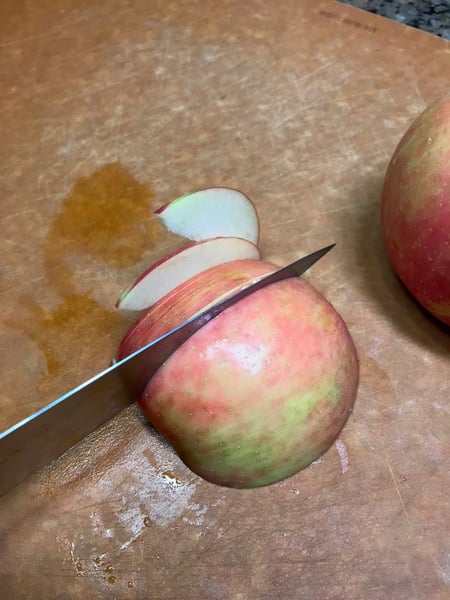
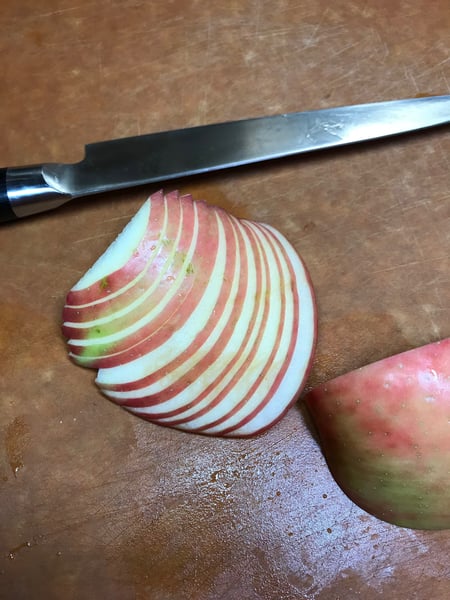
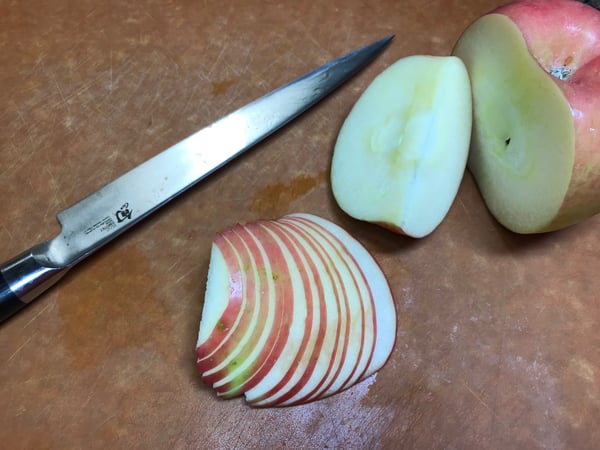
Kitchen Shears / Poultry Shears
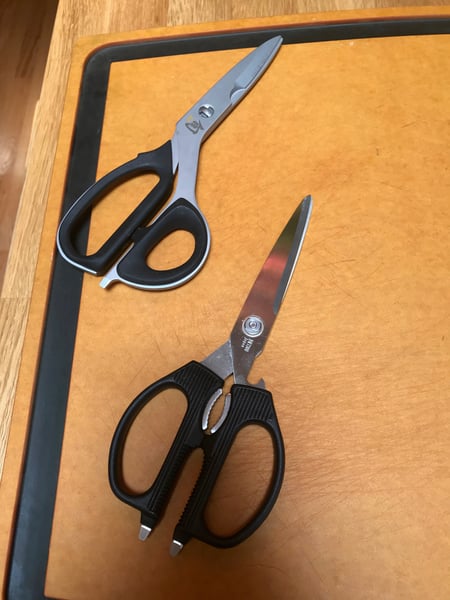
One could argue that kitchen shears belong in the original cool kids group from my last knives post, and I would say I could agree with that, which is why I knew I needed to have it as a part of this article for sure. Here is the most important tip to know when purchasing kitchen shears: spend as much money as you can to buy the absolute best quality shears you can. I have had many cheap pairs over the years, and it wasn’t until I actually invested in a quality pair of kitchen scissors, AND used them for kitchen tasks – NOT opening boxes from Amazon, or cutting the kids' school projects, did I realize how invaluable they are. If the shears are strong enough and sharp enough, they can often cut through the back of a chicken, definitely remove fins from a whole fish, and easily cut the excess dough hanging over the side of a pie plate. I have even been known to “dice” whole canned tomatoes right in the can using a pair of kitchen shears. Some important questions to ask yourself when purchasing:
- Are the handles comfortable in your hand?
- Can you separate the blades for cleaning?
I added poultry shears into this category because as you can see from the picture the shape is just a little bit different, offset, from classic shears and the blade is a bit longer. If you are like me, and almost exclusively buy whole chickens and butcher them yourself, then these might me a worthwhile investment, however for most people a good pair of classic shears will do the job quite well.
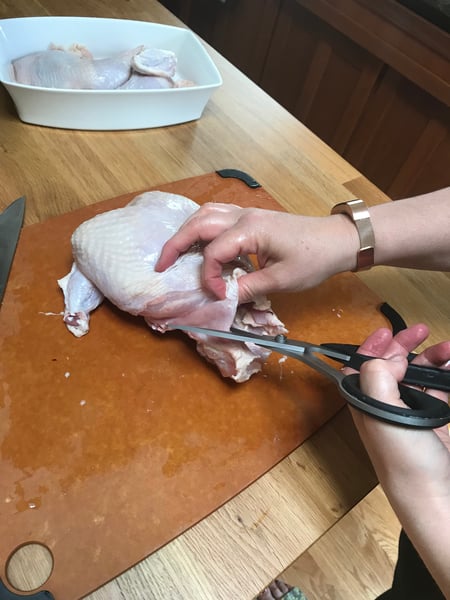
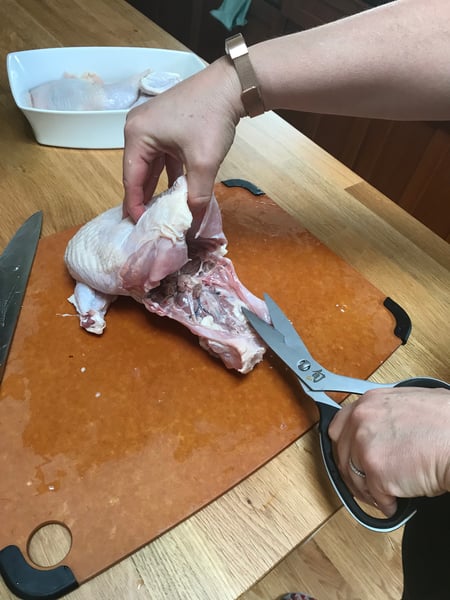
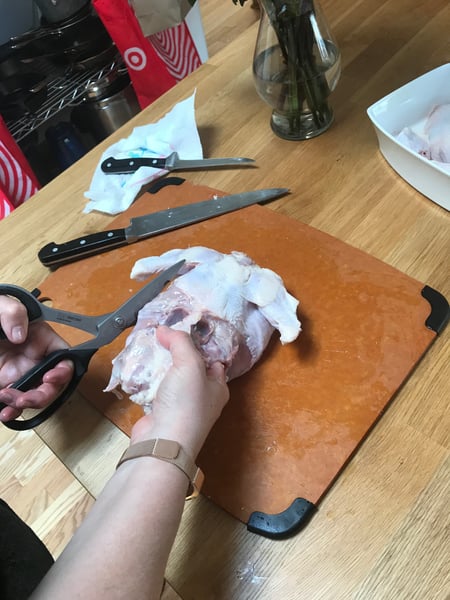
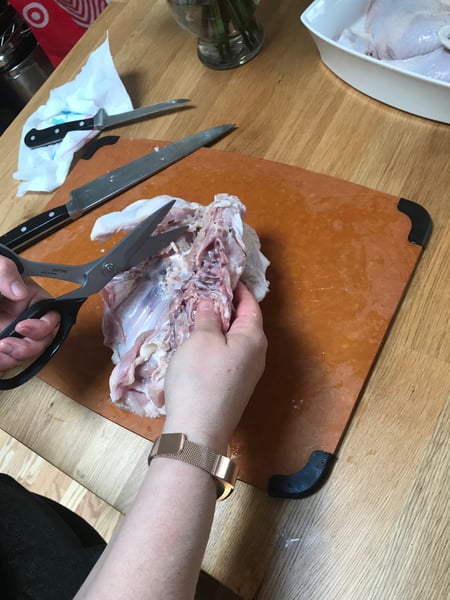
Caring for your knives
One last point I failed to mention in my previous post but that also applies to these knives as well: if you are going to invest some hard earned money in knives, then it is crucial that you NEVER, EVER put them in the dishwasher. Dishwasher detergent is very harsh. Just wash them by hand in hot soapy water, dry with a clean dishtowel and then place them back into a block, or a drawer system. If you don’t have either of those, then individual knife guards will do just fine. Just don’t toss them haphazardly into a drawer because they can get scratched, dull or even chip (think thin fine blade of the fillet knife).
The Chopping Block’s Knife Skills class is a great place to become familiar with knives because you not only learn how to use knives, and to get to try different brands, styles, sizes, etc. but you truly do get an education about cutlery.
There are some other classes where you get to see in action and/or use some of these more specialty knives such as Pie and Tart Boot Camp and our Knife Skills Plus class which covers challenging fruits and vegetables that you might otherwise shy away from, including: pineapple, butternut squash, tomatoes, leeks, mangoes, oranges and avocados.
Want to get started on your knife skills on your own at home? Download our free Knife Skills 101 guide.

